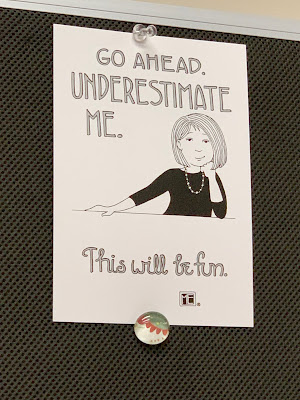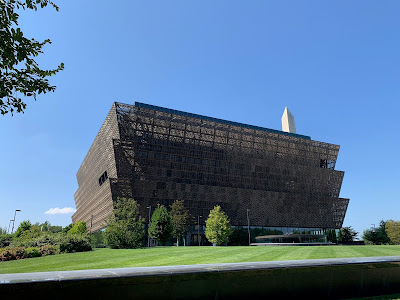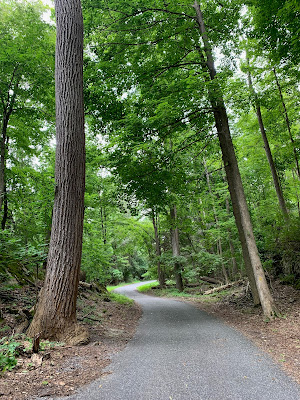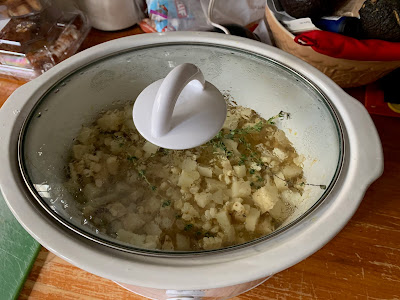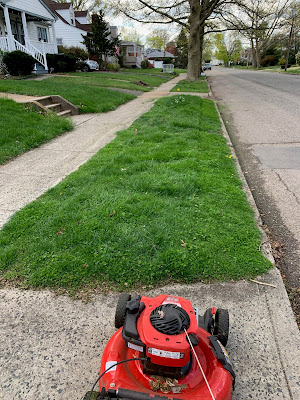I have wanted to visit the Smithsonian Museum of African American history since it first opened in 2015. When my nephew and his girlfriend came East for a visit and wanted to see D.C., I seized on the opportunity and it was the very first thing I saw on my visit to the city.
The museum has 7 floors —— 3 underground and 3 above ground, divided by an expansive lobby on the ground floor. Though entrance is free, tickers are required because the museum is so popular with visitors. There is something very heartening about this and as I waited in line I felt like I was surrounded by a host of fellow Americans who get it. These days, that’s no small thing.
The floors below the lobby depict the years from slavery’s arrival in North America to the election of Barack Obama and beyond. Visitors descend three levels to begin and the space is dark this far below. It took me a minute to realize that the walls are covered in a substance that looks like wood. We are in the hull of a ship making the journey of the Middle Passage.
There are some artifacts, though few relative to the fact that we are in a Smithsonian museum of history. Most of what we view are the words of people - Oloudah Equiano especially - describing the reality of enslavement. The displays are offered in a tone of matter-of-factness and it is in these descriptions and maps of the journey across the Atlantic and portrayals of the slave ships’ holds that the horror takes shape for museum visitors.
The visitor winds around, slowly ascending toward the 19th century. There is a statue of Thomas Jefferson and his words in the Declaration of Independence, plus descriptions of the enslaved population at Monticello, including the stories of the Hemmings family. The history is presented precisely in order for the visitor to draw her own conclusions about both Jefferson and the nation he helped found. As I walk through the history, of the 1800s the abolition movement comes into view. The words and actions of abolitionists like Frederick Douglass, Sojourner Truth, Harriet Tubman, Elizabeth Cady Stanton, and William Lloyd Garrison take command of the narrative. At every juncture, the experiences and lives of Black Americans are at the core of the story.
Notably, there are few artifacts, a fact that underscores the reality of being enslaved and held as property. People denied the power to own their very bodies leave few possessions to be cherished. Those artifacts that are displayed - a lace handkerchief that belonged to Harriet Tubman; a copy of Frederick Douglass’ North Star newspaper - are more powerful because of the rarity.
As I continue to walk the path upward, the historical record winds from the hopes of Reconstruction to the discouragement and terror of Jim Crow. Military service by Black Americans, segregation, and the Great Migration sit alongside one another, telling the story of our nation. Now there are more pictures and artifacts to show the story, including a powerful and emotional display of the story of Emmet Till’s trip to Mississippi.
The museum tells the story of our collective past with space left open for us to make a better future, no small task in this nation. It celebrates Black lives, community, and culture without shirking the harder truths lived by those lives. The museum is a monument to our collective history. For much of my walk through this story of the United States, my emotions were at the surface, as they often are when I teach this history, which I take pains to keep alive. I want everyone in this nation to visit the museum and to spend time wrestling with the truth of our collective past. It is the only way to a better future for us all.









